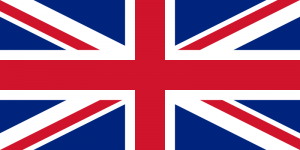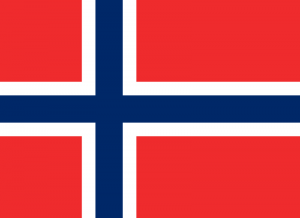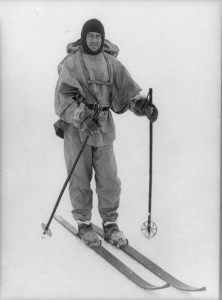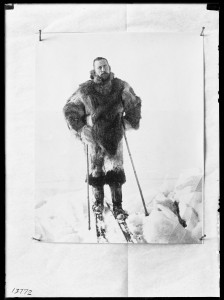The Expeditions

Robert Falcon Scott (England)
From Cadet to Captain; Scott Puts His Preparation Skills to the Test
Born in 1868, Robert Falcon Scott began his naval career as a 13-year-old cadet aboard the training ship HMS Britannia. At 15 he became a midshipman and began a steady progression up the career ladder of the Royal Navy, becoming a lieutenant specializing in the new technology of torpedoes in 1889. His progress, however, gained urgency when financial disaster struck his family. In 1894, he found himself responsible for his widowed mother and unmarried sisters. Needing a substantial promotion, in 1899 Scott became interested in an Antarctic expedition that was then being organized by the Royal Geographical Society and the Royal Society.
Photo © AMNH
In some respects, Scott was a curious choice: although he was of the right age, technically accomplished, and a veteran of the Royal Navy, he had no experience of exploration at all, let alone polar travel. However, he was installed as commander of the National Antarctic Expedition in 1900. He had little more than a year to prepare everything. His ship Discovery, specially built for the expedition, left England in August, 1901. In the third week of January 1902, after being briefly delayed in the pack ice, Discovery entered McMurdo Sound and a safe spot was found near the southern end of Ross Island to anchor. The team embarked on the major trek of the Discovery expedition at the end of October 1902. Scott was trying to determine whether the long line of mountains stretching away to the south was a chain of closely spaced islands or the actual edge of the southern continent. To get there, they had to cross the unknown surface of the ice barrier which, they hoped, might offer a simple and relatively easy path to the South Pole. Scott selected physician Edward Wilson and Ernest Shackleton, who would go on to a career as a famous Antarctic explorer, to join him in his attempt on the pole. The unfamiliar terrain made the trek extremely difficult and they were forced to turn around at the end of December, in latitude 82°S. There were other journeys, but no new attempt was made on the South Pole in the remaining year of the Discovery expedition. In September 1904 Scott returned to England to a warm reception. While the Discovery expedition failed to reach the South Pole, it set the stage for further work and was deemed a landmark success in the history of British Antarctic exploration. New research in geology, zoology, meteorology, and polar magnetism had been undertaken, with notable if somewhat mixed success.
If At First You Don’t Succeed…
Scott had a captain’s job to return to in the Royal Navy, but he now had to look hard at his future. The prospect of many more years as a middle-rank, middle-aged salaryman in the Royal Navy must have failed to satisfy because by 1907 he was already planning to finish what he started. He was going to return to the ice and reach the pole. Soon enough, Scott learned that another explorer was making similar plans. He was shocked to find out that it was his old sledgemate Ernest Shackleton. Now that the two had become competitors, their formerly collegial relations evaporated. Shackleton left for the south in 1907 aboard his ship Nimrod and made a nearly successful run for the pole the following year. Although he had to turn back a little more than 100 miles from the pole, Shackleton came back to Britain a hero. He received a knighthood but had fallen short of the mark. In Scott’s mind, the way south was open once again. He spent the next year feverishly raising money. Financially, it was touch and go almost to the last minute. Finally, on June 15, 1910, the expedition sailed out of Cardiff Bay aboard the Terra Nova. Along the way the vessel stopped in South Africa, Australia and New Zealand before finally departing for McMurdo Sound at the end of November.
A Challenger On The Horizon
In the midst of preparations for final departure, Scott had not allowed himself to think much about a telegram he had received two months earlier, while in Melbourne, Australia. Or, at least, he chose not to discuss its upsetting contents with his men. It seemed that this peculiar Norwegian fellow, Amundsen, was not going to the Arctic aboard the Fram, as he had promised, but instead was intending to make a race of it for the South Pole. As far as Scott was concerned, the British expedition was going to Antarctica for scientific purposes, not for the publicity stunt of reaching the South Pole first. Or so he told himself.

Roald Amundsen (Norway)
From Aspiring Explorer To National Hero;
Early Antarctic Experience and Early Success
Born to a family of Norwegian shipowners on July 16, 1872, Roald Amundsen was four years younger than Robert F. Scott. Despite his mother’s hopes that he would become a doctor, Amundsen knew by the age of 15 that he would one day be an explorer.
Leaving university for a life at sea, he joined the 1897-99 Belgica Antarctic Expedition under Adrien de Gerlache to explore the western side of the Antarctic Peninsula. The ship became trapped in the ice for 13 months and the relentless darkness, isolation, and inadequate nutrition began to affect the crew. Amundsen credited the expedition’s surgeon and photographer, Frederick Cook, for saving them from the looming threat of scurvy by organizing hunting excursions to find seal meat, which contains small quantities of vitamin C. The ship finally escaped the ice and the crew returned home. Amundsen gained crucial experience in Antarctic survival and developed the ability to cope with life-threatening situations.
Photo © AMNH
Amundsen’s first independent journey was the 1903-06 expedition to the ice-choked channels north of mainland Canada. During the 19th century, the British Royal Navy had unsuccessfully tried to find a dependable route, or a Northwest Passage, through this daunting maze. It took three years, but where others had failed, Amundsen succeeded. He became a hero in Norway and gained the notice of the country’s most famous explorer, Fridtjof Nansen.
Armed with Experience, Amundsen Makes Plans for the North Pole
Amundsen had learned valuable lessons from the Netsilik Inuit he encountered in northern Canada, especially with regard to proper clothing and the handling of dogs. He knew preparation was everything and, armed with this knowledge, he was ready for all that the polar regions had to show him. He set his sights on the North Pole, which modern explorers had been trying to reach since the late 18th century.
Amundsen spent the next two years planning his assault. He wanted to use Nansen’s famous ship, Fram, because it was specifically designed to withstand being frozen into the sea ice without damage.
To win support for this venture, however, Amundsen included a significant scientific component in his plans. Amundsen was poised to leave in 1909, but in April, two American explorers–Robert Peary and Fred Cook–claimed to have already reached the North Pole. Had scientific research been Amundsen’s chief goal, failure to be the first shouldn’t have mattered very much. But for Amundsen, it meant finding another objective, one that would be regarded just as important in the world’s eyes.
With Plans to Head North in Shambles, Amundsen Secretly Aims South
But there were some problems with his decision to head south. Robert Falcon Scott had already announced his intention to sail for Antarctica in 1910, with the same aim of reaching the South Pole. More importantly, Amundsen had received funding from the Norwegian government for his planned Arctic expedition.
Amundsen was faced with a choice. He could openly announce his intention to go south and hope that everyone would regard the change of plan as acceptable. Or he could pretend the Arctic trip was still on while surreptitiously making his preparations for Antarctica. Amundsen did not hesitate for very long: All would be done in secret.






